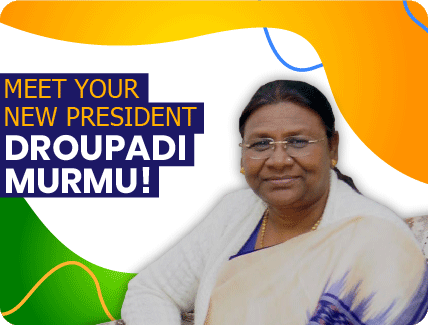

















History was made on 21 July, 2022, when Droupadi Murmu was elected as the President of India. She is the first person belonging to a tribal community to become President and the second woman in India to hold the country’s highest office, after Pratibha Patil.
Murmu was also Jharkand’s first female governor in 2015. Hailing from Rairangpur in Odisha, she belongs to the Santhal community. This community can trace its origins to many different regions of India, including Odisha, Bihar, Jharkhand, and West Bengal. Tribal communities have not only faced exclusion under British rule, but have also had their lives disrupted in major ways post independence. Murmu’s election will hopefully bring a decided change to the lack of representation in national matters, which tribal communities have to contend with on a daily basis.
To understand the role of the President, we must first understand how the government is structured in our country. The Indian government is divided into three bodies; the legislature, the executive and the judiciary. The legislature refers to members of the Indian Parliament and the state legislative assemblies. The judiciary comprises the Supreme Court and its various subsidiaries. Then there’s the executive branch, which consists of the President, Vice President, Prime Minister, and the Council of Ministers. It is the executive branch that ensures that the laws made by the legislature are implemented and followed. The President of India heads the executive branch, and is the head of the Indian state. That is why it is called the highest office in the land.
The President performs a number of functions. Some of the notable ones include:
In short, the president’s office becomes an important position within the government that is supposed to provide an unbiased system of checks and balances for the legislature.
Elected members of the
The votes are casted through a ballot system and calculated using two formulae: one ensures that each State Legislative Assembly gets uniform representation as per the state’s population, and the other balances out any disparity between the houses of the Parliament and the State Legislative Assemblies. The purpose of the ballot system is secrecy.
Each President serves a term of five years.
After taking the oath of office on 25 July, Droupadi Murmu declared her intention of working for the well-being of underserved communities in India. She also addressed the youth of the nation and highlighted their importance in the future of India, declaring that she would provide her “full support” to them.